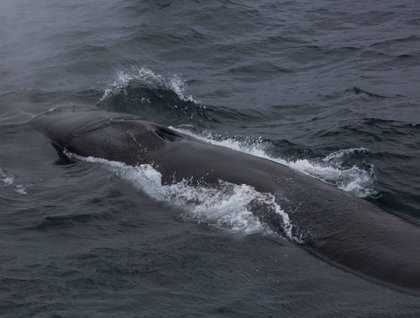If you were outside on deck today, you probably did not spend more than half an hour before going back inside for a cup of chocolate or tea and to regain at least some mobility in your extremities. South of the convergence or polar front as it is known these days, air temperatures are rarely far from 0° Celsius and the constant winds chill the air in a way only someone that has been to Antarctica can understand. Imagine then, spending 16 days on a wooden lifeboat roughly the size of our Zodiacs, with hardly any warm food or freshwater, no real place to rest or protect you, wet clothing, and a very uncertain future at best. This is what Ernest Shackleton and five of his men did, on these very same waters, 100 years ago in a desperate attempt to find help in South Georgia not only for themselves but also for their stranded comrades in Elephant Island. We can only imagine what they physically and mentally endured while they survived storms that during those same days sank a much larger whale catcher in nearby waters.
We had hoped to find some whales of course, but to have a group of 25-30 fin whales feeding so close to the ship, some of them almost bow-riding and moving around as gently as a small dolphin was well beyond our expectations! Not every day you get ‘sprayed’ by a whale but… is it good or bad luck? The staff on the bow seemed to disagree on that whaling tradition, but we were definitely all very happy to have enjoyed such a close encounter. Fin whales are the second largest animal to have ever lived in this planet, second only to the blue whale. They can weight up to 120 tons and the females being 5-10% longer than males can measure up to 27 meters. The group we observed was feeding on massive concentrations of krill so much that in places turned the ocean orange! An individual whale can consume up to two tons of prey per day. Pintados, blue and black-bellied petrels and even some black-browed albatross benefited from the whales bringing the krill to the surface and also made a good meal out of the feast. Being able to travel extremely fast for such a large animal, fin whales were really never hunted to the extent that other slower swimming species were; hence their population numbers are still fairly good in the Southern Oceans although still threatened.
A few more hours of sailing will bring us into the vicinity of Elephant Island—a magnificent and imposing place in its own right, but also a key location on the Shackleton story that our trip has been retracing.







